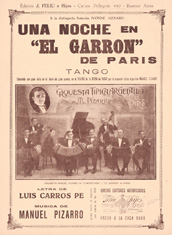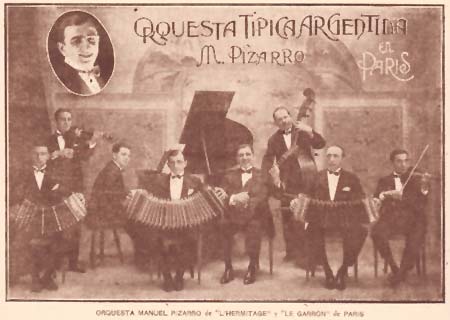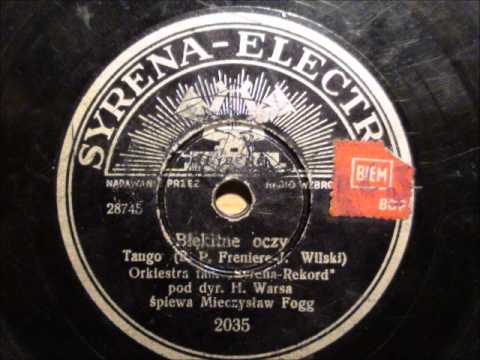 France (and Paris particularly) has played a remarkable role in tango's rise to popularity
on more than one occasion.
France (and Paris particularly) has played a remarkable role in tango's rise to popularity
on more than one occasion.
In the 1920's Paris was the city that ensured the survival and warm reception of tango around the world, including back in its birthplace in Argentina. Even though tango was born in Argentina, it was not originally accepted by Argentina's high society. Tango was mostly found in slums and suburbs, among hundreds of thousands of immigrants, who made up the lower classes at the time. Around 1912-1914 the tango craze swept across Europe, as dancers and musicians from Buenos Aires traveled to European destinations. The wave of popularity morphed in time, as the “international style” of tango emerged in Europe, intended to bring tango in line with the acceptable European ballroom dances. The effect of tango in Europe was strong enough that higher society back in Argentina accepted it, in its original Argentine form.
 France was the first of the European countries swept up by the tango craze, with Paris
being the likely first city to adopt it and make it fashionable. The first tango recording
was made in Paris, played by the French national guard, as Argentina at that time did not
have a recording studio. Thus, Argentine tango owes much of its success to France and
Paris, specifically.
France was the first of the European countries swept up by the tango craze, with Paris
being the likely first city to adopt it and make it fashionable. The first tango recording
was made in Paris, played by the French national guard, as Argentina at that time did not
have a recording studio. Thus, Argentine tango owes much of its success to France and
Paris, specifically.
In the 1980's Paris once again gave tango a much needed stamp of approval, ensuring its revival. By 1980's, for various reasons, Argentine tango was mostly faded into the oblivion. The reemergence of Argentine tango started with the Tango Argentino show, which, despite being an Argentine production, first opened in Paris in 1983. The show featured a number of now prominent tango dancers, and was a great success. Over the next few years the show quickly won over audiences all over the Europe and North America, and was followed by other successful shows. This triggered the start of a newfound worldwide interest in tango that spans to the present day.
Throughout the years, France (and especially Paris) has been the home and a touring destination to numerous tango artists of all kinds. Today it remains one of the tango world's most coveted tango tourism destinations and a thriving center of Argenine tango.
 Poland was not the first European country to succumb to the early 20th century tango craze,
but it was the country that fell the hardest.
Poland was not the first European country to succumb to the early 20th century tango craze,
but it was the country that fell the hardest.
Unlike many other European countries and their capitals, Poland was not a typical destination for touring tango dancers, musicians, and vocalists. Poland inhaled tango through mass media of the time — gramophone records, radio, and newspapers. The country quickly fell in love with tango and started adopting it.
Poland eventually developed its own style of tango music and songs. At first, Polish translations of Argentine tangos were performed and recorded. Then Poland gradually started creating its own tangos, withs their own unique flavor. As time went on, the Polish tango departed more from its Argentine origins, and developed its own unique and signature features and style. In time, Polish tango overshadowed original Argentine tango.
 Polish tango artists and their compositions had a profound effect on the world's tastes in
tango and the popularization of tango. Some of their work was highly popular in Europe,
translated into numerous languages, and still quite widely known today. In many cases, the
Polish roots of these tangos are somewhat forgotten. One of the most striking examples
would be the “Weary sun” (Russian: “Утомлённое солнце”) which is
one of the most popular Russian tangos, recorded and performed countless times.
“Weary sun” was actually composed by a Polish pianist and composer, Jerzy
Petersburski, renowned mostly for his tangos. The original tango, “This is the last
Sunday” (Polish: “To ostatnia niedziela”) was translated and re-written
in many languages, including three variants in Russian, and used in over a dozen movies. In
significant parts of Europe, in the mainstream culture, this tango completely eclipses the
“Cumparsita.” Many other Polish tangos of pre-World War II era followed a
similar fate.
Polish tango artists and their compositions had a profound effect on the world's tastes in
tango and the popularization of tango. Some of their work was highly popular in Europe,
translated into numerous languages, and still quite widely known today. In many cases, the
Polish roots of these tangos are somewhat forgotten. One of the most striking examples
would be the “Weary sun” (Russian: “Утомлённое солнце”) which is
one of the most popular Russian tangos, recorded and performed countless times.
“Weary sun” was actually composed by a Polish pianist and composer, Jerzy
Petersburski, renowned mostly for his tangos. The original tango, “This is the last
Sunday” (Polish: “To ostatnia niedziela”) was translated and re-written
in many languages, including three variants in Russian, and used in over a dozen movies. In
significant parts of Europe, in the mainstream culture, this tango completely eclipses the
“Cumparsita.” Many other Polish tangos of pre-World War II era followed a
similar fate.
Today Poland has a thriving Argentine tango community, and is the home of numerous wonderful Argentine tango events and festivals, some of which are considered to be among the very best in Europe.